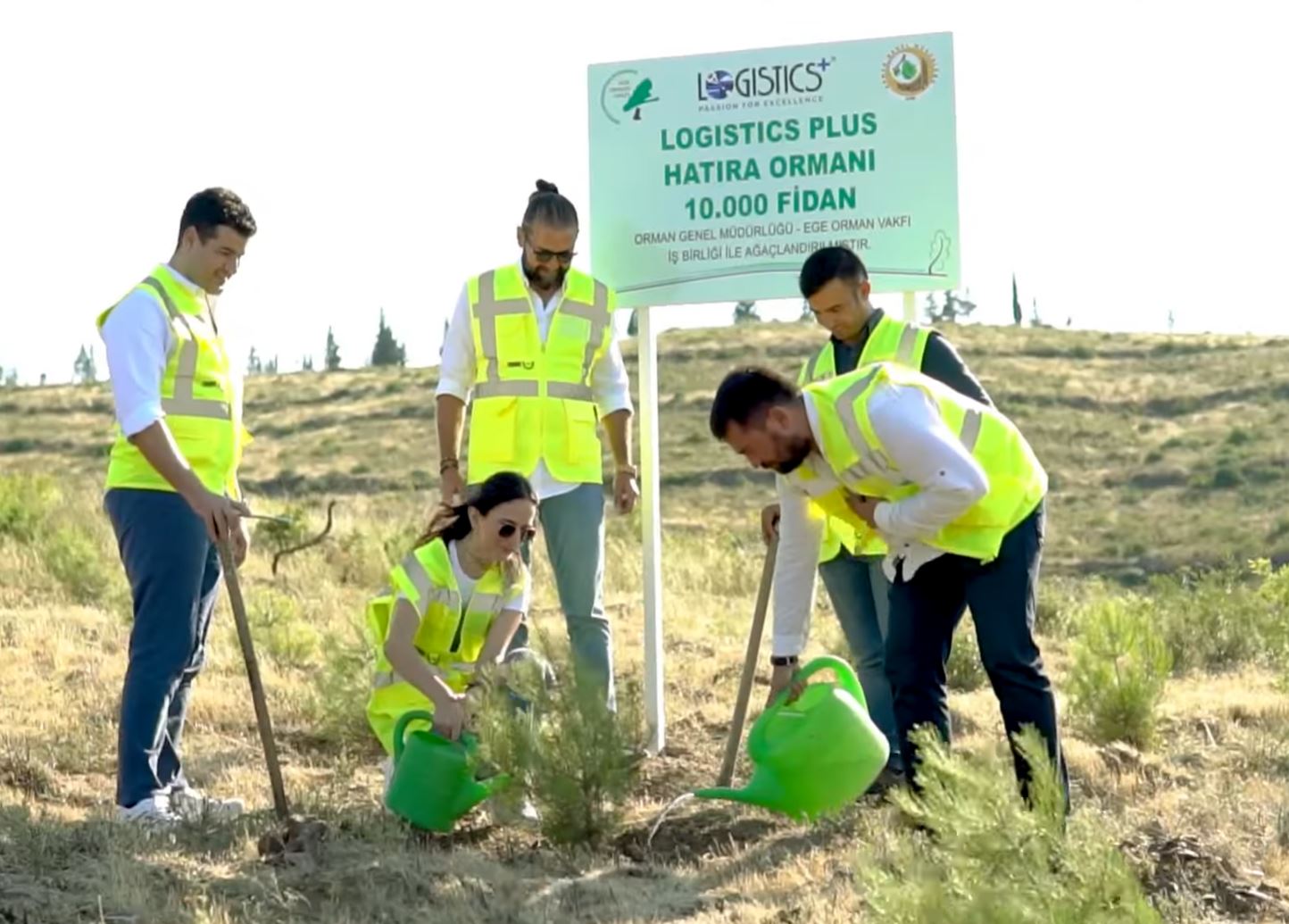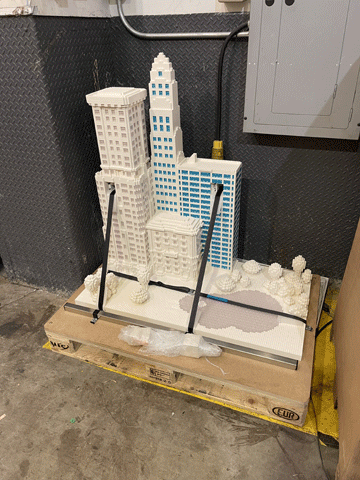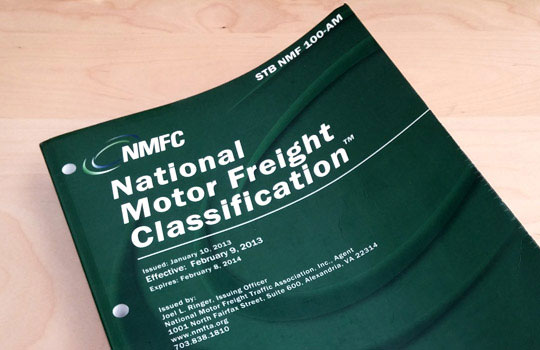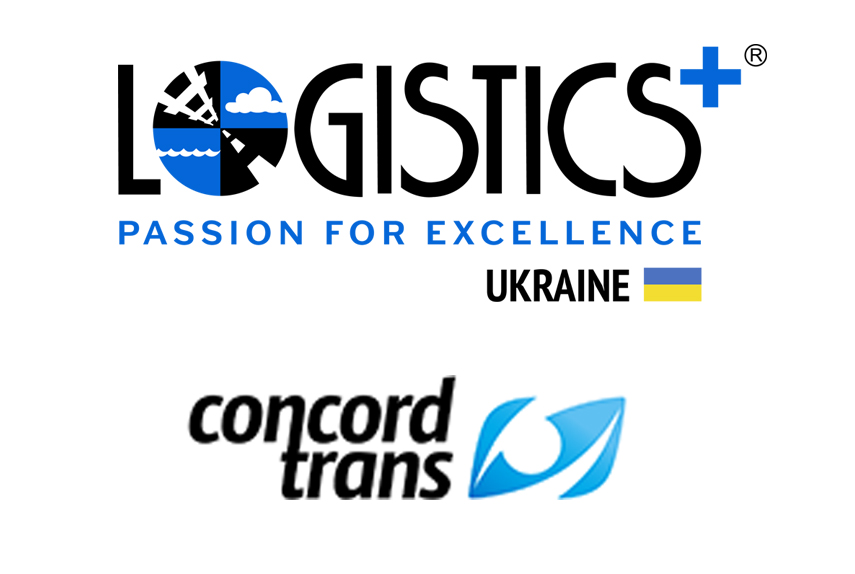
by logisticsplus | Jul 15, 2022 | News
 Now that the 2022 Northwestern Pennsylvania High School Sports Awards Show has ended, all of us at Logistics Plus would like to congratulate the finalists on their outstanding seasons and the final winners on their awards that were announced last Thursday evening. We are proud to have been a marquee sponsor of the event for the sixth straight year. Special congratulations to Emma Ruhlman for winning the “I Am Sport Award” sponsored by Logistics Plus and to Aidan Mack for winning the “Courage Award” sponsored by Logistics Plus. We’d also like to thank Erie Times-News/GoErie.com for once again hosting the event and to Pittsburgh Steelers defensive lineman Chris Wormely for his warm greeting and insightful talk at the event.
Now that the 2022 Northwestern Pennsylvania High School Sports Awards Show has ended, all of us at Logistics Plus would like to congratulate the finalists on their outstanding seasons and the final winners on their awards that were announced last Thursday evening. We are proud to have been a marquee sponsor of the event for the sixth straight year. Special congratulations to Emma Ruhlman for winning the “I Am Sport Award” sponsored by Logistics Plus and to Aidan Mack for winning the “Courage Award” sponsored by Logistics Plus. We’d also like to thank Erie Times-News/GoErie.com for once again hosting the event and to Pittsburgh Steelers defensive lineman Chris Wormely for his warm greeting and insightful talk at the event.
Here is a YouTube replay of the live event that took place on June 16th:

Here is a slideshow from the Logistics Plus Flickr page with some of the photos from the event (use the right/left arrows to scroll):
![2022 High School Sports Awards]()

Update: Here is a replay of the national USA Today High School Sports Awards virtual show that took place on the evening of July 31st, also sponsored, in part, by Logistics Plus.

by logisticsplus | Jul 12, 2022 | News
Logistics Plus Turkey is proud to announce that they have planted 10,000 pine bushes in the Bergama, Kinik region of Turkey, creating the ‘Logistics Plus Memorial Forest.’ To learn more about the project, watch the video below or on the Logistics Plus YouTube Channel.
Logistics Plus received the following letter from the Aegean Forest Foundation:
The Aegean Forest Foundation, which was established in 1995; offers projects, practices, and trainings for the creation and sustainability of new forest areas, forest fires, land degradation, desertification, floodplain improvement, climate change, protection of biodiversity, rural development, adaptation of low carbon emission technologies, renewable energy, and energy efficiency working to raise awareness.
Our foundation carries out its forestation activities within the framework of the protocols it signed with the Ministry of Forestry. In 26 years, we have enabled nearly 12 million saplings to become trees and mix with the forest on an area of 75 thousand decares.
The saplings we planted when we were founded, the size of a pencil, have turned into trees today and mixed with the forests. This painting is our pride.
You created the “LOGISTICS PLUS MEMORIAL FOREST” by donating 10 thousand saplings to our İzmir Kırkgeçit afforestation project, where 50 thousand saplings were planted on 35 hectares of land.
Thank you for the support you give to our forests, which is the greatest legacy we can leave to future generations.


by logisticsplus | Jul 11, 2022 | News
 Logistics Plus Customs Brokerage Manager Gretchen Blough makes another appearance on Marketplace, hosted by Kai Ryssdal, to discuss China tariffs.
Logistics Plus Customs Brokerage Manager Gretchen Blough makes another appearance on Marketplace, hosted by Kai Ryssdal, to discuss China tariffs.
The White House appears to be at an impasse on the future of the Trump-era tariffs on imports from China: Keep them as leverage or lift them to help curb inflation? And while that debate inside the administration continues, the customs brokers caught in the middle are stuck waiting.
“I have a fabulous team, and I had to tell them, ‘Please don’t be so efficient,’” said Blough, who works at Logistics Plus in Erie, Pennsylvania. “‘Please clear the shipments that are coming from China a little bit closer to the actual arrival time, so if we have to make adjustments, we can with minimal interruption.’”
You can listen to the complete podcast segment below or online at https://www.marketplace.org/2022/07/08/customs-brokers-caught-in-middle-china-tariffs-debate/.
Marketplace® is a nonprofit news organization on a mission to raise the economic intelligence of the country. For more than 30 years, they have helped people become smarter about the economic forces that touch their daily lives through the unorthodox story, the casual conversation, and the unexpected angle on the news.

by logisticsplus | Jul 8, 2022 | News
 Kudos to Kalynne Ziacik, a Logistics Plus Air Import Specialist, for helping a major, global retailer with a critical Lego® window display delivery for their flagship NY store. The shipment was delivered intact ahead of their deadline. It was another LP team effort, but you could also say that Kalynne did most of the ‘leg-o-work’ on this project ?.
Kudos to Kalynne Ziacik, a Logistics Plus Air Import Specialist, for helping a major, global retailer with a critical Lego® window display delivery for their flagship NY store. The shipment was delivered intact ahead of their deadline. It was another LP team effort, but you could also say that Kalynne did most of the ‘leg-o-work’ on this project ?.
TEAMWORK = DREAMWORK! ♥


by logisticsplus | Jul 5, 2022 | News
 The Freight Classification Development Council (FCDC) has discussed new amendments to the National Motor Freight Classification (NMFC®). These NMFC changes are effective 08/13/2022. Some notable changes are listed below.
The Freight Classification Development Council (FCDC) has discussed new amendments to the National Motor Freight Classification (NMFC®). These NMFC changes are effective 08/13/2022. Some notable changes are listed below.
Subject 1 – Flat Glass; or Glazing Units, glass, not in sash – Items 86700
and 86960
Subject 2 – Loudspeakers or Speakers – Item 62420 – Changed to a Single class, 125
Subject 3 – Weatherstrips or Weatherstripping – Item 196955
Subject 4 – Fittings, electrical conduit, NOI – Item 62010
Subject 5 – Ironing Boards
Subject 6 – Glass Fireplace Guards or Screens – Item 69455
Subject 7 – Hitches or Couplers, vehicle, not wheeled – Item 192030 – Changed from a single class 70 to a full density item.
Subject 8 – Organs, Pianos, Keyboards or Synthesizers, electronic or
digital – Item 139165
Subject 9 – Beds, disappearing folding type, door, recess or wall, or
Murphy Beds – Item 79720
Subject 10 – Specifications for Wood Boxes
Subject 11 – Item (Rule) 280 and Item (Rule) 680 – Flexible Intermediate
Bulk Containers (FIBCs)
Subject 12 – Item (Rule) 580 – Labeling, Marking or Tagging Freight – The terminology and requirements in Item 580 are amended to be consistent with today’s practices.
Subject 13 – Lights (Lites) and Frames, boat porthole or deck; or Glass,
automobile or boat, including Windshields or Windshield Glass – Items 25100 and 86630
Subject 14 – Plastic or Rubber Tire Patches, Plugs or Liners – Items
157213 and 157215
Subject 15 – Silica Gel, including Silica Gel Catalyst or Desiccants –
Item 46050
Subject 16 – Mulch, horticultural – Item 138720 – Changed to a single class 70.
Subject 17 – Seats or Backs, chair or stool
Subject 18 – Chair Parts, molded paper or pulp – Item 82845
Subject 19 – Mail – Item 133940
Subject 20 – Item (Rule) 420, Sec. 3 – Explanation of the ‘0’ Class
Subject 21 – Balls, tennis – Item 15590 – Changed to two tier class item based on density of Less than 6 pcf or 6 pcf or greater
Subject 22 – Item (Rule) 680 – Requirements for Pails Unitized or Secured on Lift Truck Skids, Pallets or Platforms – amended by the addition of new paragraph 3 in Sec. 7(b), which provides detailed requirements for the unitization or securement of pails on lift truck skids or pallets.
Subject 23 – Item (Rule) 680, Sec. 9(b) – Strapping Requirements for Articles Exceeding 48 Inches in Height – Item 680, Sec. 9(b) is amended to require the use of at least two straps around the perimeter of two or more articles each exceeding 48 inches in height when tendered side-by-side on lift truck skids or pallets.
Subject 24 – Telescopes, NOI, toy or other than toy – Item 58350
Subject 25 – Manikins, medical or rescue training; or Kits, medical
training aid – Item 56825
Subject 26 – Bins, revolving – Item 82340
Subject 27 – Pads, heating, electric – Item 62640
Subject 28 – Bed Kits, unassembled, unfinished wood, including Loft Bed Kits – Item 81360
Subject 29 – Bottle Openers, NOI – Item 100560 – Changed from Single class 77.5 to a two tier class based on being less than 12 pcf or 12 pcf or greater.
Subject 30 – Pens or Markers, writing
Subject 31 – Bins, hardware, small parts storage or tool, compartmented,
steel, not thinner than 24 gauge – Item 79085
Subject 32 – Toilet Bowls or Toilet Tanks – Items 159505 and 159510 – These Items canceled and moved into Plumbing Good #158880. A full Density item.
Subject 33 – Package 1018
Subject 34 – Item (Rule) 225 – Definition of or Specifications for Pails
Subject 35 – Miscellaneous Packaging Provisions
Subject 36 – Miscellaneous Packaging Provisions
Subject 37 – Miscellaneous Packaging Provisions
Subject 38 – Miscellaneous Packaging Provisions
Subject 39 – Specific Provisions for Commodities Regulated as
Hazardous Materials – Items 12780, 14160, 14700 and 14770
Subject 40 – Refrigerants, NOI, other than gas – Item 169270 – Amended to restrict its application to materials not required by the DOT to bear a Hazard Class or Hazard Division label or placard. New Note, item 169271 is established to clarify the item’s application and to direct the Classification user to other items for classes applicable to such hazardous materials.
Subject 41 – Cancelation of Numbered Packages
Subject 42 – Cancelation of Numbered Packages
Subject 43 – Obsolete Provisions – Multiple Items
Subject 44 – Obsolete Provisions – Multiple Items
Subject 45 – Obsolete Provisions – Multiple Items


by logisticsplus | Jul 5, 2022 | News
FOR IMMEDIATE RELEASE
Logistics Plus Acquires Concord-Trans to Expand its Ukraine Operations
The acquisition offers additional freight forwarding and project cargo capabilities to the region.
 ERIE, PA (July 5, 2022) – Logistics Plus, Inc. (LP), a leading worldwide provider of transportation, logistics, and supply chain solutions, has announced the acquisition of Concord-Trans, a Ukrainian-based freight forwarding and logistics company. Located in Ukraine’s capital city, Kyiv, with a second office in Odesa, the purchase includes nearly a dozen in-country logistics professionals specializing in road, sea, and air freight transportation, customs clearance capabilities, and project cargo management.
ERIE, PA (July 5, 2022) – Logistics Plus, Inc. (LP), a leading worldwide provider of transportation, logistics, and supply chain solutions, has announced the acquisition of Concord-Trans, a Ukrainian-based freight forwarding and logistics company. Located in Ukraine’s capital city, Kyiv, with a second office in Odesa, the purchase includes nearly a dozen in-country logistics professionals specializing in road, sea, and air freight transportation, customs clearance capabilities, and project cargo management.
“Logistics Plus remains committed to supporting Ukraine, and the Ukrainian people whose lives have been ripped apart by this war,” said Yuriy Ostapyak, COO for Logistics Plus and a Ukraine-born U.S. citizen. “The activities needed to rebuild Ukraine after the war will be significant. The acquisition of Concord-Trans gives Logistics Plus the additional in-country expertise required to play a major role in providing the logistics solutions needed to support the long-term rebuilding efforts.”

The LP Ukraine Kyiv Team
“We are very pleased to join the Logistics Plus team,” said Oleksandr Korzun, General Manager for Logistics Plus Ukraine. “It is especially nice to do this at such a difficult time for our country. I am very grateful to Logistics Plus for the outstretched hand of help to our company and Ukraine as a whole. I hope that together we will do a lot of good for both the company and Ukraine.”
Before the acquisition of Concord-Trans, Logistics Plus already had a significant presence in Ukraine, with an office of nearly fifty people located in Ivano-Frankivsk, a city of about 240,000 people in the western portion of that country. Earlier this year, Logistics Plus established lpukrainerelief.com, which has raised over $660 thousand to help Ukrainian refugees. The company has also been actively working with local organizations to warehouse and transport multiple containers of relief goods to the region.
To learn more about the expanded “LP Ukraine” office and capabilities, please visit www.logisticsplus.com/meet-the-logistics-plus-ukraine-team.

90-second audio clip

60-second Audio Clip

30-second Audio Clip
About Logistics Plus Inc.
 Logistics Plus, Inc. is a 21st-century logistics company that provides freight transportation, warehousing, fulfillment, global logistics, business intelligence, and supply chain management solutions through a worldwide network of talented and caring professionals. The company was founded 25 years ago in Erie, PA, by Jim Berlin. Today, Logistics Plus is a highly regarded, fast-growing, and award-winning transportation and logistics company. With its trademark Passion For Excellence™, Logistics Plus employees put the ‘plus’ in logistics by doing the big things properly, plus the countless little things that ensure complete customer satisfaction and success.
Logistics Plus, Inc. is a 21st-century logistics company that provides freight transportation, warehousing, fulfillment, global logistics, business intelligence, and supply chain management solutions through a worldwide network of talented and caring professionals. The company was founded 25 years ago in Erie, PA, by Jim Berlin. Today, Logistics Plus is a highly regarded, fast-growing, and award-winning transportation and logistics company. With its trademark Passion For Excellence™, Logistics Plus employees put the ‘plus’ in logistics by doing the big things properly, plus the countless little things that ensure complete customer satisfaction and success.
The Logistics Plus® network includes offices, warehouses, and agents located in Erie, PA; Aurora, CO; Buffalo, NY; Charlotte, NC; Chicago, IL; Chino, CA; Cincinnati, OH; Cleveland, OH; Colton, CA; Dallas, TX; Dayton, NJ; Des Moines, IA; Haslet TX; Houston, TX; Laredo, TX; Lexington, NC; Los Angeles, CA; Miami, FL; New York, NY; Olean, NY; Ontario, CA; Phoenix, AZ; San Francisco, CA; Tulsa, OK; Vancouver, WA; Australia; Belgium; Brazil; Canada; China; Colombia; Czech Republic; Egypt; France; Germany; India; Indonesia; Japan; Kazakhstan; Kenya; Libya; Malaysia; Mexico; Netherlands; Poland; Saudi Arabia; Singapore; Taiwan; Turkey; UAE; Uganda; and Vietnam; with additional agents around the world. For more information, visit www.logisticsplus.com or follow @LogisticsPlus on Twitter.
Media Contact:
Scott G. Frederick
Vice President, Marketing
and LTL Carrier Relations
Logistics Plus, Inc.
(814) 240-6881
scott.frederick@logisticsplus.com
Click the image below to download the Logistics Plus logo:


 Now that the 2022 Northwestern Pennsylvania High School Sports Awards Show has ended, all of us at Logistics Plus would like to congratulate the finalists on their outstanding seasons and the final winners on their awards that were announced last Thursday evening. We are proud to have been a marquee sponsor of the event for the sixth straight year. Special congratulations to Emma Ruhlman for winning the “I Am Sport Award” sponsored by Logistics Plus and to Aidan Mack for winning the “Courage Award” sponsored by Logistics Plus. We’d also like to thank Erie Times-News/GoErie.com for once again hosting the event and to Pittsburgh Steelers defensive lineman Chris Wormely for his warm greeting and insightful talk at the event.
Now that the 2022 Northwestern Pennsylvania High School Sports Awards Show has ended, all of us at Logistics Plus would like to congratulate the finalists on their outstanding seasons and the final winners on their awards that were announced last Thursday evening. We are proud to have been a marquee sponsor of the event for the sixth straight year. Special congratulations to Emma Ruhlman for winning the “I Am Sport Award” sponsored by Logistics Plus and to Aidan Mack for winning the “Courage Award” sponsored by Logistics Plus. We’d also like to thank Erie Times-News/GoErie.com for once again hosting the event and to Pittsburgh Steelers defensive lineman Chris Wormely for his warm greeting and insightful talk at the event.![]()
![]()




 Logistics Plus Customs Brokerage Manager
Logistics Plus Customs Brokerage Manager 


 ERIE, PA (July 5, 2022) – Logistics Plus, Inc. (LP), a leading worldwide provider of transportation, logistics, and supply chain solutions, has announced the acquisition of
ERIE, PA (July 5, 2022) – Logistics Plus, Inc. (LP), a leading worldwide provider of transportation, logistics, and supply chain solutions, has announced the acquisition of 

 Logistics Plus, Inc. is
Logistics Plus, Inc. is 